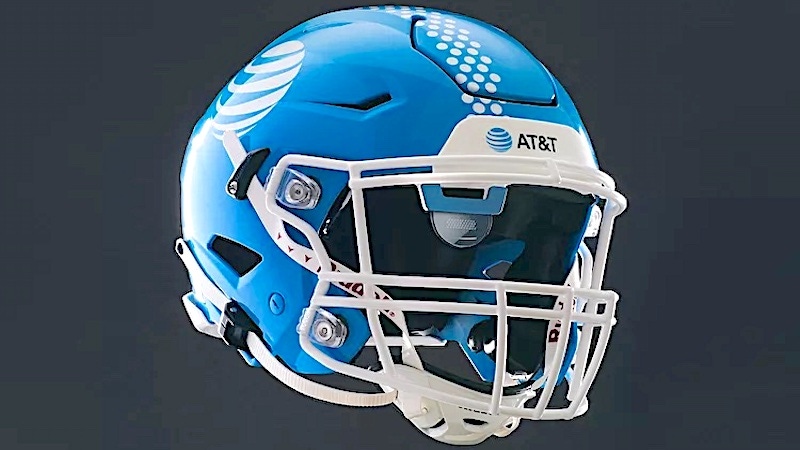AT&T Delivers Augmented Reality Helmet to Gallaudet’s Deaf Football Players
The AT&T 5G-Connected Helmet lets coaches send plays to an augmented reality display in the helmet.

Fans watch football offenses huddle before the snap so the quarterback can relay the play to his teammates, probably without realizing that the huddle is an innovation introduced by the deaf and hard-of-hearing players at Gallaudet University in 1894.
That’s when quarterback Paul Hubbard introduced the idea of gathering the offensive players together so he could sign the play call to them without being seen by the opposing team. Now, the university is testing a new innovation that could be just as big: the AT&T 5G-Connected Helmet.
This is a helmet that contains a receiver and a small display that provides the wearer with the play call sent from a tablet computer on the sideline by the coaching staff. This has obvious benefits for players who cannot hear shouted play calls. “When we hit ‘send,’ the player receives it and it is clear,” said head coach Chuck Goldstein.
“To have the opportunity to get their attention on the playing field during a game, that will level the playing field for us.”
Following NCAA approval, the helmet made its competitive debut in Gallaudet’s game against Hamburg, N.Y.’s Hilbert College on Oct. 7. They won that game and won the Eastern Collegiate Football Conference (ECFC) championship, providing the opportunity for the team to play in a post-season bowl game.
Alumni linebacker Rodney Burford, Jr. was involved with the helmet’s development, and he was impressed by the AT&T engineering team’s interest in delivering what players wanted. “They were very open,” he said. “You know how some people ask you for feedback, but they don’t listen? They heard me!”
“Together with Gallaudet, we are proving that connecting changes everything,” said Corey Anthony, senior vice president of network engineering and operations at AT&T. “Our expertise in connectivity combined with Gallaudet's legacy of breaking down barriers has created a helmet that not only transforms the way deaf and hard of hearing athletes engage in sports but opened up endless possibility for innovation.”
“When I first put on the helmet and I first saw the play, it felt like the world just instantly lifted off my shoulders,” exclaimed fellow alumni linebacker Stefan Anderson. “Hearing players have the audible. We have this different device that we look through and so it does feel like, ‘Hey, we have the same access.’”
Additionally, the helmet can provide players with other information, such as when the referees whistle the play dead. This is important so that players know when to stop. “Less penalties,” predicted linebacker Jacob Hartman. “No more late hits.”
This will also open new horizons for deaf and hard-of-hearing players who hope to continue playing after college, he pointed out. “I think that AT&T helmet will change my whole life. If I plan to play in a professional league, I won’t miss anything.”
That’s the prediction of Gallaudet athletic director Warren Keller, who says that the school’s football team, with a little help from AT&T’s engineering team, have the chance to leave their mark on the sport for a second time. “I believe in a few years everyone, from the NCAA to NFL, will be using this technology,” he said.
About the Author(s)
You May Also Like





